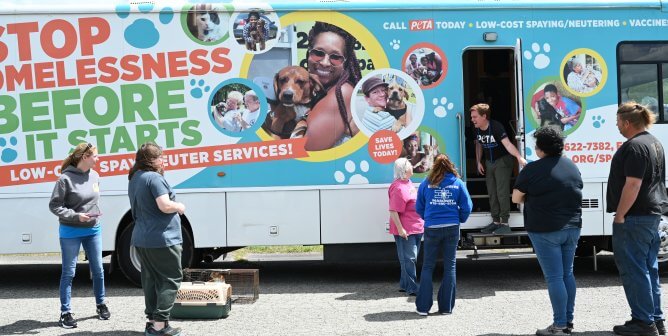
This post originally appeared on notesfromadogwalker.com and has been adapted from its original version.
This has been a heavy, heartbreaking week in the world of animal welfare. A few days ago, a formerly reputable sanctuary in Texas called Spindletop Refuge was raided by authorities. Close to 300 dogs, mostly pit bulls, were discovered living in terrible conditions. It was just one of many failures this week.
The reason why this particular case is so upsetting is that this was supposed to a “good” sanctuary. Rescue groups and families from around the country have been sending their dogs to live there, paying hefty boarding fees, in the hopes that the dogs would have a chance at another life out in Texas. Some dogs were adopted out, others lived at the sanctuary for life.
Apparently on the surface, this place seemed a like a good one. People have come forward to say that they visited Spindletop as recently as the first week of July and were satisfied that it was a safe, clean facility. Turns out they weren’t seeing the whole facility—only a small part of it.
The woman who ran the organization has a long and positive history in animal welfare and, at one point, I believe this really was a good place for dogs, mostly pit bulls, that no one else would care for. But something went terribly wrong, and the dogs kept coming, and now rescues and families are scrambling in a panic to get the dogs back.
They must feel beyond guilty for sending the animals that they love into this situation. I know I did.
Years ago in Philly, I helped care for a small feral cat colony that had sprung up in a construction site across from the house of one of my dog-walking clients. Not having much experience with ferals, I reached out for help and found a woman who would help me trap the cats. The construction site was rapidly turning over into new luxury homes. The cats couldn’t stay there, so we had no choice but to remove them. The short story is that we trapped the kittens, and I adopted them out. But the adult females were a different story. They were truly feral and suffering in the home of the trapper, an experienced feral handler. We came to the agreement that the cats were miserable in her house, despite her best efforts, and we had to do something. We couldn’t return them to their former “home”—it was now the foundation of a townhouse. We couldn’t take them to the city shelter. They would be caged, stressed, then killed for being feral. So we looked into a sanctuary and found one in western Pennsylvania.
We were as diligent as we thought was necessary about checking out a place that was a day’s drive away. I had multiple phone calls with the owner. We spoke to other people who had transported cats out there and seen it in person, and they swore it was a safe, clean, enriching place for cats to live out their lives, if they were not adopted out. Desperate not to put these two cats to sleep (one of them now named “Dolce” after me), we arranged for a volunteer to drive them out to the sanctuary.
Those of you in animal welfare might be wondering: Yes, it turned out to be the infamous Tiger Ranch. A few years after we brought our two feral cats there, authorities raided this sanctuary and found dead cats and neglected animals everywhere.
I was sick that I had contributed to this, and that’s when I knew: You’re only rescuing an animal if you see it through all the way to the end, whatever that end may be. I had passed the buck onto someone else. And failed to take full responsibility for the lives I had “saved.”
Even though I was afraid it might be dangerous to send them to a sanctuary (and I knew I wasn’t doing my due diligence inspecting the property personally), I was more afraid to make the other choice—euthanasia.
Here’s what I know now, having worked at a shelter and in rescue: All animals deserve love at the end of their lives. Sometimes the most loving thing we can do is to provide a peaceful death. And a peaceful death comes from a human taking full responsibility for the life of that animal. I wish I had done that for those two cats.
Shipping animals off to live in sanctuaries, many of which are not being run particularly well (there are exceptions), is not necessarily saving them. It’s often the beginning of a life sentence. Time and time again, we hear about sanctuaries that started off OK, but due to a variety of circumstances, the sanctuary falls apart, and the animals suffer. It’s often the case that something like terminal illness, natural disaster, financial ruin, mental illness, etc., pushes the sanctuary over the edge, and the animals pay the price.
Before you raise your pitchforks at the owners of these sanctuaries to call them monsters, I ask you to look at the whole picture. Where are these animals coming from?
From people like me—everyday people who “rescue” animals and desperately reach out for help once they realize they’re in over their heads. From no-kill rescue groups and shelters that don’t want to euthanize pets they’ve taken into their care but have run out space or do not have resources for long-term housing. From families that for whatever reason cannot care for their pets.
We all keep pushing down the chain. Individuals reach out to shelters, shelters plead with rescues to pull dogs, rescues can’t place all the dogs so they board hard-to-place dogs in sanctuaries.
We’re all begging for someone else to give us the happy ending we so desperately want for the animals we love. If people deny us, we lash out that no one will help. If a shelter isn’t no-kill, we refuse to donate to them. We keep pushing and pushing until someone will take this painful, difficult situation off our doorstep.
We all push until we find sanctuaries who say yes.
Can you blame them for saying yes? How long could you say no for, when the world is banging down your door to help just “one more” innocent animal? The pressure on these people to say yes is enormous. No doubt about it—they should be responsible and limit their intakes, and their behavior, in the case of Tiger Ranch and other similar scenarios, is criminal. But in reality, their failure to be responsible comes at the end of a long line of people who failed to make responsible choices. We can’t turn the spotlight on their mismanagement and recklessness without turning it back on ourselves.
We are so invested in the misunderstood idea of “no kill” that we will do anything to postpone the death of the animals we care for. And so the dogs and cats get shipped out across the country or driven across the state, packed with their paperwork and all of our hopes that there really is a happy ending out there for every single animal. And then they wait. In kennels and cages, for months, then years. They spend 23 to 24 hours a day in their kennels. No family to call their own. Warehoused and tucked away from the world.
Alive, But Not Living
We’ve passed the work on to someone else. And then, when those people crumble under the weight of the pile we have swept upon them, we turn our fingers on them and say they’re the monsters.
I’ve come to think that we’re all just different parts of one dangerously ill body.
One part of this sick body is the public and our expectations of what no-kill sanctuaries can do for our pets. If you own a pet that you feel you cannot keep, please know this: You are your pet’s best resource. Very few people will care more about the outcome of your pet’s life than you. Invest your time and energy into properly managing, training, or seeking vet care for your pets. If that does not work, think very hard about whether or not your pet will be able to withstand the intense stressors of life in a lonely kennel, particularly if you are looking at a sanctuary. There are no easy answers or quick fixes out there.
I believe that the most loving thing we can do for animals is to stand with them until the very end. Sometimes the end is providing excellent lifetime management, sometimes it’s rehoming them, sometimes it’s finding a good shelter or rescue that has a committed staff or volunteers, but sometimes the end is death. Putting them to sleep, in your arms, can be the greatest act of love you give to your pet. You are giving them an end with dignity. We need to consider this as part of our responsibility to our pets.
Before I go on, I’d like to make this clear: I believe in shelters and rescues, and I support the “no kill” approach as long as it’s done with the quality of an animal’s life in mind. I believe many, many places are doing good, responsible work and that the public should be encouraged to bring their pets to these places, if they cannot care for them any longer, so that the pets have a chance at a new life. I’m not trying to scare anyone away from surrendering a pet to a shelter or rescue. I am not saying that all animals are better off dead than at a shelter. What I’m talking about in this blog is our responsibility to animals, how we all contribute to this mess, and the misunderstood idea that saving an animal means just keeping them alive.
If you are a rescuer: Saving animals doesn’t end at pulling them off the euthanasia list or picking them off the street. If you cannot commit to the process of housing, managing, adopting out, and providing owner support to the pet that you are “rescuing,” then you need to examine what it means to “save” an animal. The glory of pulling a dog from the “to be killed” list isn’t the end zone. The real success comes when the pet is in a home that you or your group is providing ongoing support for. If you can’t do that, do not point fingers and claim that no one will help you. You committed to caring for this animal once you saved it, so the animal is now your responsibility. See it through, even if in the end, there is no glory.
Cats and dogs live in the moment. They are not burdened with thinking about the future. That is our load, as humans, to bear for them. Instead of passing their suffering along to someone else, in an attempt to relieve ourselves of the psychological pain of euthanizing an animal or the physical discomfort of having to do the difficult work of management and foster care, I beg you to carry the weight for them. Do the hard work. But if you cannot place them in another home, if you cannot provide the care they need to stay sane and healthy in a long-term, no-kill shelter environment, if you cannot manage them safely around others, if they are suffering, you must take responsibility for their life: Love them until the very last minute, and let them go.
I don’t know what the solution to this huge, complex problem is, but we are all part of this problem: the shelters, the public, the rescues, the animal welfare organizations, the families, the sanctuaries. And we all need to work together to fix it. Every time we save a life, we have to commit to providing a level of care for that animal that makes their life worth living. It takes a lot of work. And a ton of resources. And it might mean saving fewer animals, but we’ll be providing a higher level of care for the ones we do save. Simply keeping them alive, at any cost, is not a humane solution.
I know the rescues and families that sent dogs to Spindletop are beside themselves with regret and sorrow. And I’m sure this week’s events will have a profound effect on them. My heart is with those folks and the dogs they tried so hard to save.
I’m still so sorry for the suffering that I contributed to when I made the choice to pass the responsibility of the feral cats to someone else. I’ve never done that again. It means I’ve rescued fewer pets, but the ones that I have, I’ve seen through to the end—sometimes it’s meant putting them to sleep, and sometimes there are happy endings. Either way, I’m committed to taking responsibility for the animals I rescue, no matter what the outcome.
There are worse endings than humane euthanasia. Spindletop, Tiger Ranch, and all the others proved that to be true. May we all find a way to do the hard work, for the sake of the animals.






